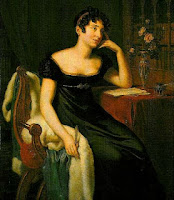August Rodin’s The Kiss illustrates an iconic human act of a loving embrace. However, the two individuals do not touch. The significance of this is the key to understanding the iconic realism in this work of art. These two lovers emulate a common, human activity, yet this embrace, sculpted to express lack of physical contact, creates certain dissonance.
The message from this careful configuration could be that humanity longs to embrace life fully, as an act of love; however, certain parameters prevent this occurrence. Other possible interpretations may involve a sense of distance. Regardless of the interpretation, this sculpture exemplifies iconic realism in that 1. there is an iconic structure, 2. placed in a realistic setting that does not conform to the accepting reality of intimacy. Through this juxtaposition, the artist illustrates 3a. cultural liberty, an innovation for the era in which it was sculpted or 3b. the gentle spirit that exists when true love is expressed freely.
To hear me read this, please click HERE.









